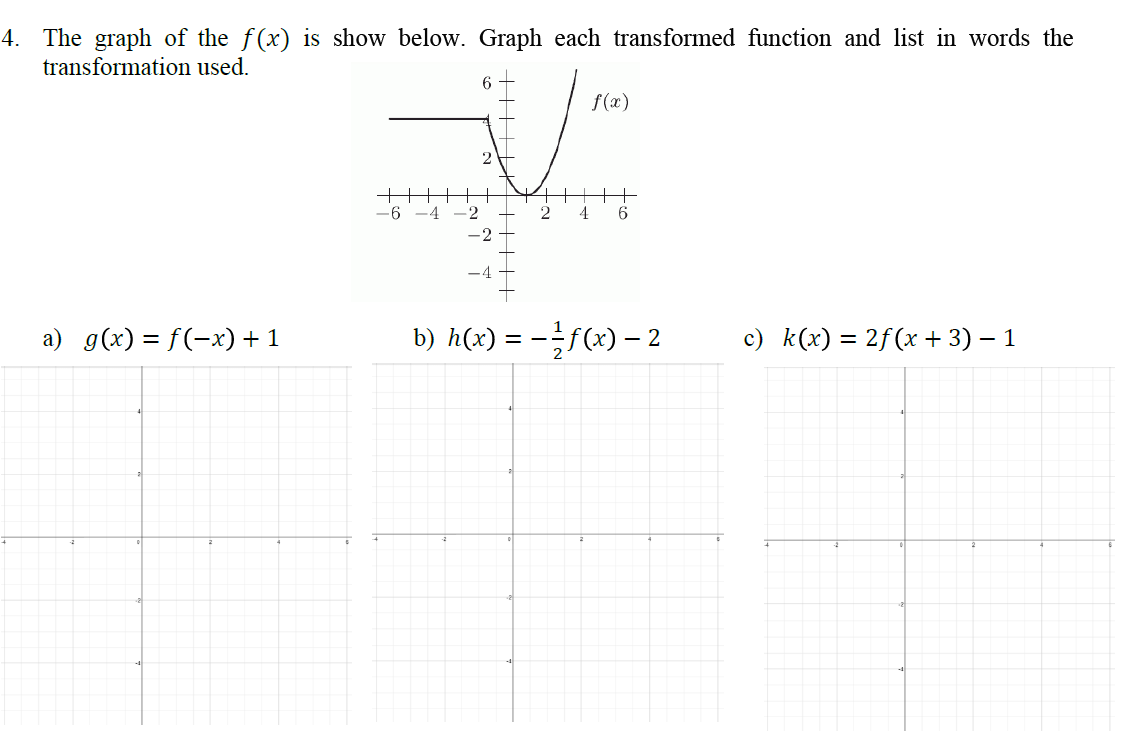The graph of the f(x) is show below. Graph each transformed function and list in words the transformation used?

I'm kind of confused on how to shift the graphs. I do know that you use this formula
y=A+(B(x−h))+k
to graph these functions.
I'm kind of confused on how to shift the graphs. I do know that you use this formula
y=A+(B(x−h))+k
to graph these functions.
1 Answer
This is the original graph of
a) This is the graph of
b) This is the graph of
c) This is the graph of
Explanation:
Use this equation to solve algebraically:
For the graph of
For the graph of
For the graph of
